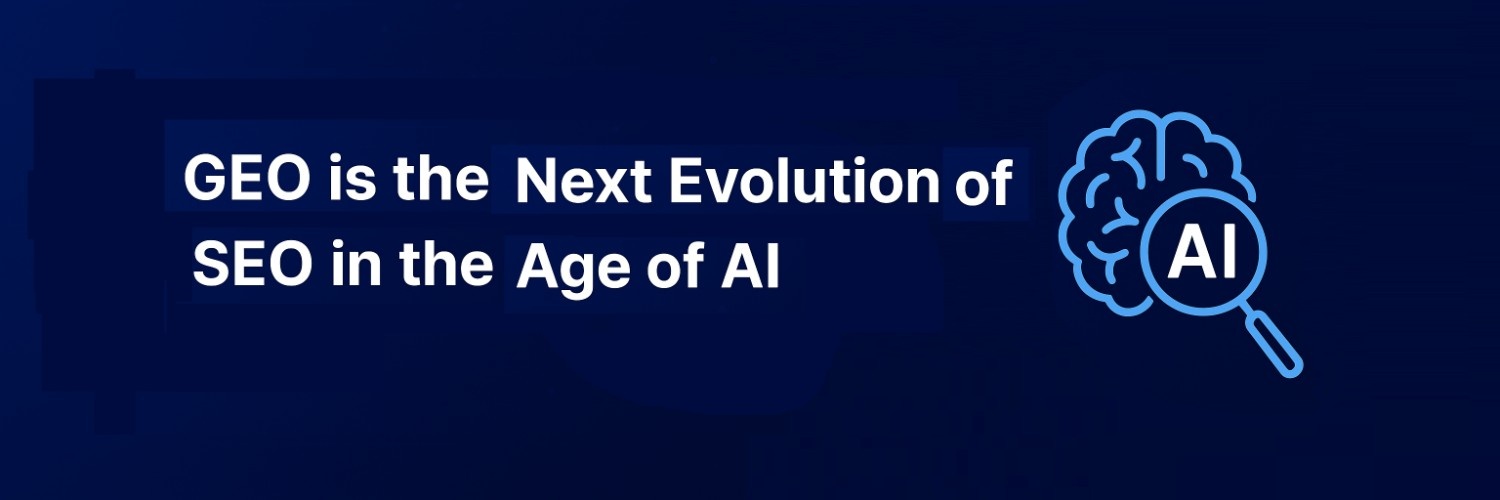
Generative Engine Optimization (GEO) is the Next Evolution of SEO in the Age of AI

The world of search is changing faster than ever. Just a few years ago, SEO was the gold standard for ensuring your content ranked well on Google and other search engines. But the rise of AI-powered assistants—such as ChatGPT, Google Gemini, Perplexity and Microsoft Copilot—has introduced a new player in the digital visibility game which is called Generative Engine Optimization (GEO). This emerging discipline focuses on optimizing content for generative engines which don’t simply index and display web pages—they read, understand, and generate answers for users in real time.
As these AI tools become a primary source of information for millions of people, mastering GEO could become just as important as traditional SEO—if not more.
What is Generative Engine Optimization (GEO)?
Generative Engine Optimization is the process of tailoring your content so that AI-powered answer engines can accurately understand, reference and reproduce it in their responses. Unlike search engines which return a list of links for users to click, generative engines summarize, paraphrase and explain information directly.
This means that even if your website has the best content, you might lose visibility if these AI tools fail to detect it as a relevant or trustworthy source. GEO ensures that your information is not only visible to AI systems but also chosen as a reference or quoted in their generated answers.
Why GEO Matters in 2025 and Beyond?
AI chatbots and generative search platforms are rapidly replacing traditional search habits. Instead of typing “best coffee beans for espresso” into Google and clicking through multiple articles, a user can now ask a generative engine, “What are the best coffee beans for making espresso?” and receive a well-structured, conversational answer instantly.
In this new landscape:
How Generative Engines Read and Use Content?
Generative engines work differently from search engines. Instead of ranking results, they consume content, extract key facts and generate responses using natural language models. This process relies heavily on:
- Natural language clarity – AI systems prefer clear, simple and unambiguous sentences.
- Structured context – Headings, bullet points and logical formatting make it easier for AI to find and use relevant details.
- Semantic alignment – AI tools match content to the intent behind a user’s query, not just keywords.
- Credibility signals – Author expertise, citations, and updated information increase the likelihood of being selected.
If your content is unclear, overly technical, or poorly structured, it may get overlooked—even if it’s accurate.
Strategies for Generative Engine Optimization (GEO)
1. Write for Both Humans and Machines: While traditional SEO also emphasizes clarity, GEO takes it further by ensuring your writing is machine-readable. Use concise language, explain concepts step-by-step, and avoid excessive jargon.
2. Match Conversational Queries: Generative engines are designed to respond to natural, spoken-style questions. Create content that answers how, what, why, and when questions directly, as if you’re conversing with a reader.
3. Use Structured Data and Schema Markup: Structured data helps AI understand context, such as product details, reviews, FAQs, or events. Schema markup increases the odds of your content being accurately interpreted and quoted.
4. Demonstrate Expertise and Credibility: Include author bios, cite reputable sources, and link to additional resources. AI systems tend to favor content that appears authoritative and well-sourced.
5. Keep Content Fresh and Updated: Generative engines are trained on recent data and value freshness. Regularly update your posts with current facts, statistics, and trends to improve their relevance.
While there is overlap—both require quality, relevant content—GEO places a stronger emphasis on AI-friendly language and machine comprehension.
The Future of GEO
Generative Engine Optimization is still in its early days, but the trend is clear: as AI assistants take over more of the information delivery process, businesses must adapt to remain visible. Future GEO may include direct integration with AI content feeds, special formatting that signals “quotable” text, and even partnerships between brands and AI platforms.
Just like SEO evolved with every Google algorithm update, GEO will evolve as generative engines improve. Early adopters who understand this shift will secure a competitive edge—not just in rankings, but in how their brand is represented in AI-powered answers.
Conclusion
Generative Engine Optimization is more than just a buzzword—it’s the natural next step in content strategy for the AI-driven internet. By writing with both humans and machines in mind, structuring your content for clarity, and maintaining credibility, you can ensure your voice is heard in the age of generative search. The sooner you embrace GEO, the better positioned you’ll be for the future of online visibility.

DO you Need some Ideas ?
I Can Help You ...
Call/WhatsApp (+91) 62038 25984

Copyright © 2025 All rights reserved | Email: umeskumar@gmail.com | Call/WhatsApp: (+91) 62038 25984
